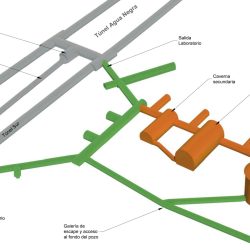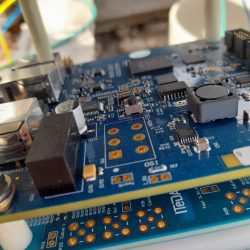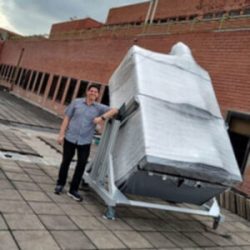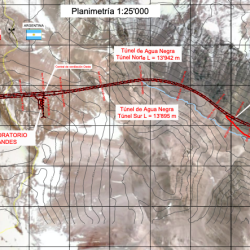
ANDES Project
ANDES (Agua Negra Deep Experiment Site) is a proposal for the construction of an underground research laboratory in the field of astroparticles. ANDES is planned to operate for 100 years from its launch and would be located within a planned mega-road project at the current “Paso Agua Negra” in the province of San Juan. This mega-project, called the “Agua Negra Tunnel,” proposes connecting the province of San Juan (Argentina) with the Coquimbo region (Chile) by crossing the Andes mountain range.
Official website: andeslab.org
Why an underground laboratory?
Billions of cosmic rays bombard the Earth every second. These come from the Sun, supernova explosions, or black holes millions of solar masses at the centers of distant galaxies.
The scientific community is building underground laboratories around the world to filter out much of this cosmic radiation and thus investigate the most elusive phenomena in the Universe. At 1,700 meters below the Earth’s surface, only a few subatomic particles are able to penetrate rock layers, allowing interference-free study of the properties of particles that interact very weakly such as neutrinos or dark matter.
How does ITEDA participate in this project?
ITeDA is Argentina’s leading astroparticle institute and is responsible for the ANDES project for the CNEA. Among its many lines of research is the study of muon propagation in rock. In particular, the muon flux that would exist at ANDES was studied. This study was conducted as part of a Physics thesis, which was recognized with the Masperi Award from the Argentine Physics Association.
In parallel, progress is being made in the construction of muon detectors, based on the AMIGA project counters, which were also developed and built at ITeDA, within the framework of the Pierre Auger Observatory. Their design and operation are currently being adapted to measure the directional flux of muons in underground laboratories.
In the future, the first muon detection is planned at the Casposo mine (San Juan, Argentina), to train human resources with knowledge of operating experiments in underground environments. The use of cryogenic MMC (Magnetic Micro Calorimeter) detectors for particle physics is another area of work within the Institute that could have a significant impact on the ANDES project. These detectors are being developed within the framework of the QUBIC project and are promising for the search for dark matter and neutrino physics, due to their high sensibility.





